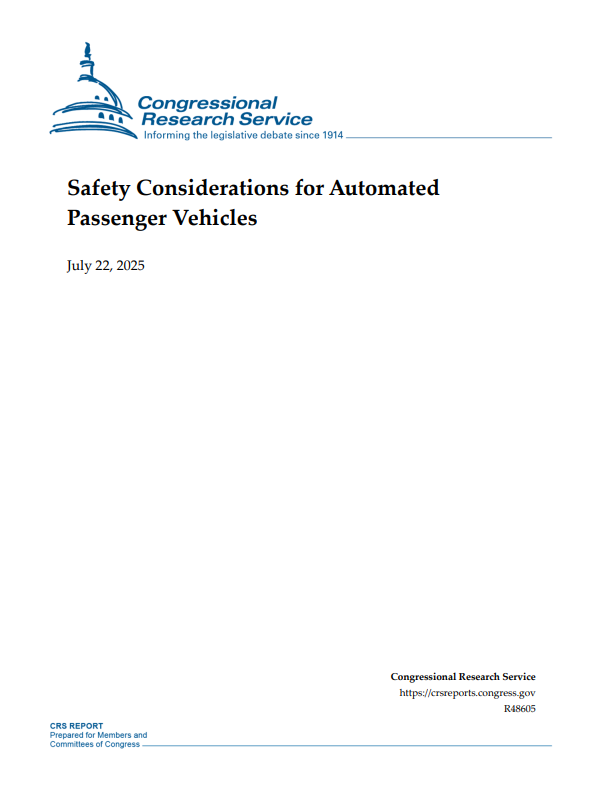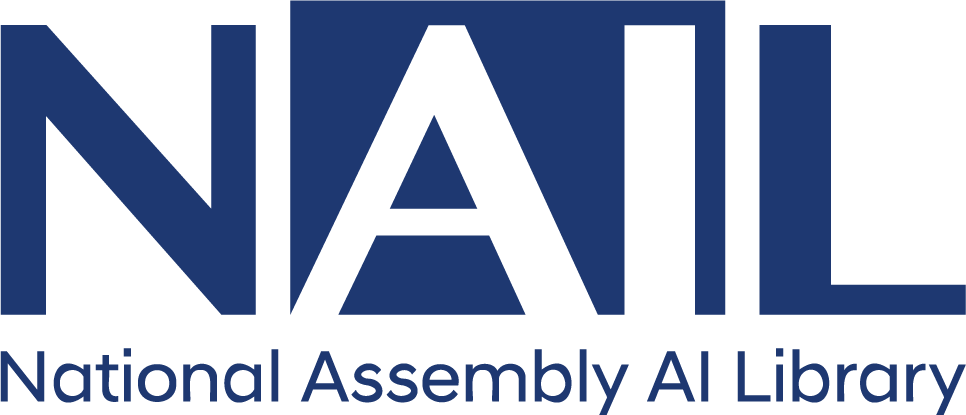
□ 현재까지 자율주행 차량에 대한 연방정부 수준의 통합된 안전 기준은 마련되지 않았으며, 대부분의 시험운행은 개별 주정부의 허가 하에 이루어짐
- 미국 교통부(DOT) 산하 도로교통안전국(NHTSA)은 자율주행 차량의 시험 운행·사고 관련 정보 수집을 제조사 자율 보고에 의존하고 있으며, 현재는 차량이 안전하다는 증빙 없이 도로 운행이 가능한 구조
- 시험 중 사고 사례도 보고되고 있으나, 제도적 대응은 미흡한 상태
□ 미 의회조사국(CRS)의 보고서는 향후 자율주행 차량의 상용화 확대에 대비해 사전 인증 제도 도입, 사고 보고 의무 강화, 소프트웨어 업데이트와 데이터 보존 기준 마련, 응급 상황 대응 시스템 정비 등 다양한 정책과제를 제시함
- 특히 자율주행 차량이 일반 도로를 주행할 경우, 기존 차량·보행자·자전거 이용자와의 상호작용 문제가 새로운 안전 변수로 작용할 수 있다는 점을 강조
□ 의회 차원에서는 자율주행 차량의 안전 기준 설정 권한을 연방정부에 일원화할 것인지, 아니면 주정부의 규제 권한을 유지할 것인지에 대한 정책적 판단이 필요한 시점
- 상용화 이전 단계에서의 공공신뢰 확보, 산업 혁신과 소비자 보호 간의 균형 설정, 법적 책임 구조 정비도 주요 과제로 부각됨
목차
Introduction 1
Defining Automation 1
Passenger Vehicle Safety 4
Evaluating the Safety of Automated Vehicles 5
Evaluation Limitations 5
Level 2 and Level 3 6
Level 4 7
Public Perception of the Safety of Automated Vehicles 8
NHTSA’s Role in Safety of Automated Vehicles 8
FMVSS 9
Investigations and Information Gathering 10
Recalls 11
Rulemaking 12
State and Federal Interactions 14
Congressional Action 15
Surface Transportation Reauthorization Acts 15
Annual Appropriations Acts 16
119th Congress 16
Previous Congresses 17
Options for Congress 17
Design and Performance 18
Data Reporting 19
Technology Standardization and Education 20
Research on Automated Vehicle Technologies 20
Oversight and Stakeholder Input 21
Figures
Figure 1. Levels of Vehicle Automation 2
Figure 2. U.S. Traffic Fatalities, 1967-2023 5
Tables
Table 1. National Highway Traffic Safety Administration (NHTSA) Regulatory Actions 13
Contacts
Author Information 22



